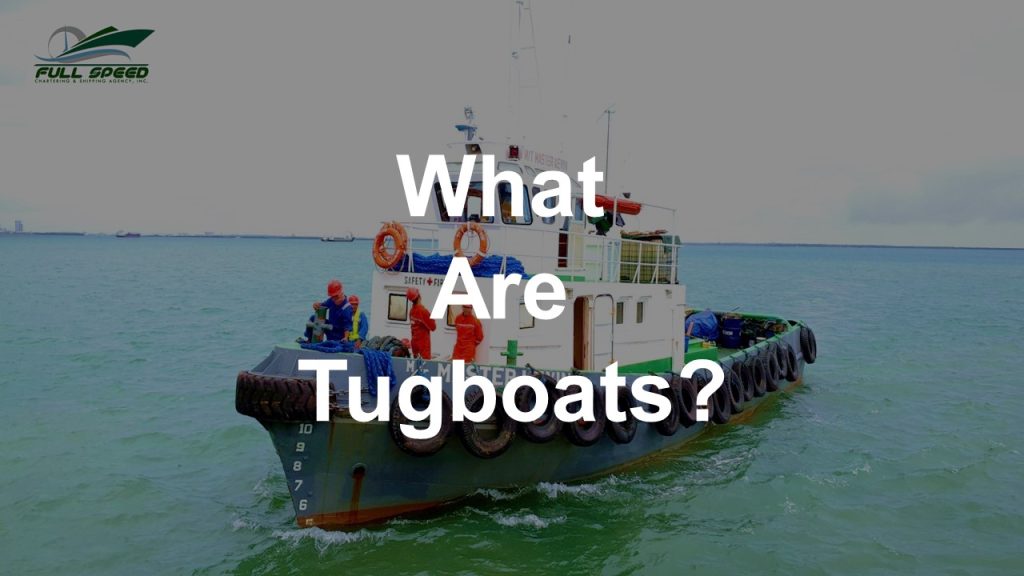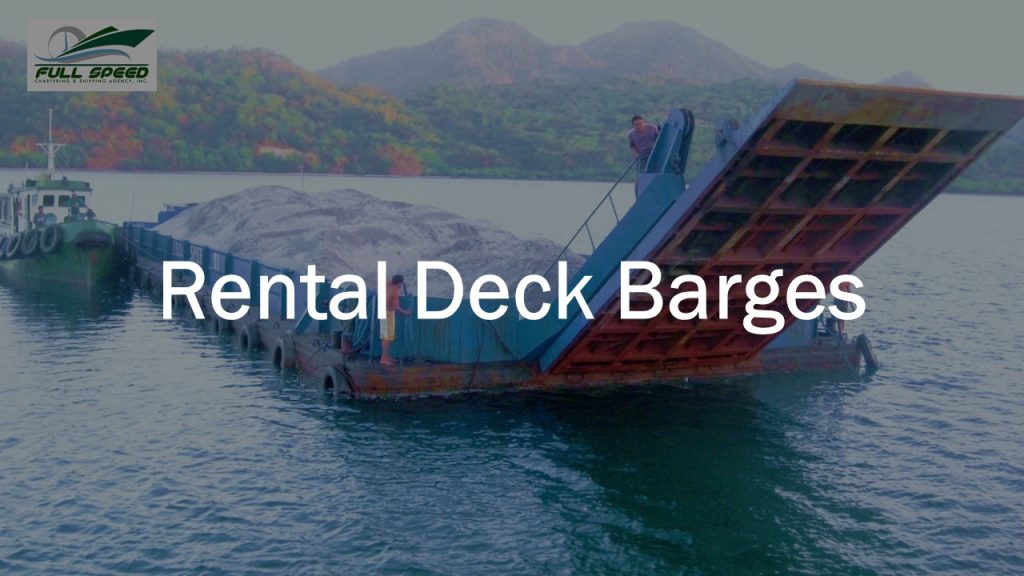As dawn breaks over the bustling city of Bulacan, a gentle hum resonates from the waterways. It’s not your ordinary city sound—it’s the harmonic symphony of tugs and barges working tirelessly in unison. Subtly embedded within this industrial ballet lies a key to efficient airport construction. Welcome aboard as we delve into the 6 benefits of using tug and barge in Bulacan City during airport construction.
Click here to view our tug and barge in Bulacan City.
Click here to view our tugboats in Bulacan City.
Click here to view our barges in Bulacan City.
Understanding Tug and Barge in Bulacan for New Manila International Airport Construction
One fascinating aspect of the New Manila International Airport construction in Bulacan City is its strategic utilization of tug and barge in Bulacan. This method, often overlooked in everyday logistics, unravels a myriad of benefits that can bring down costs while increasing efficiency. After all, vast waterways adjacent to the project provide an optimal logistical gateway for large freight movements.
Delving deeper into its mechanics, tugs conquer strong currents, pushing or pulling barges filled with substantial construction materials—like steel structures and heavy equipment—from different loading ports right to the site. Embracing this waterfront supply line not only reduces gridlock on Bulacan’s roads but also minimizes potential damage to infrastructure caused by immense transportation loads. Imagine the transformational value this sustainable solution brings forth: improving efficiency while promoting environmental preservation simultaneously!
Do You Want to Hire a Tug and Barge in Bulacan for Your Construction Projects?
With the infrastructural boom in the Philippines, there has never been a more opportune time to consider hiring a tug and barge in Bulacan for your construction projects. And where else is better suited to meet this need than Bulacan? Full Speed Chartering and Shipping Agency, Inc. (FSCSAI), one of the country’s leading maritime logistics providers, offers exceptional services that will undoubtedly streamline your construction operations and elevate your efficiency levels.
- Email us: info@fullspeedchartering.com
- Mobile, Viber, WhatsApp: +63 939 3753224
- Facebook Messenger: Click here
- Click here to inquire
For those undertaking vast endeavors like the Bulacan Airport project, FSCSAI’s equipment facilitates seamless transportation of bulky goods over considerable distances.
The company’s robust fleet, comprising tugboats, barges, and LCTs, allows for bulk transportation with remarkable ease. These are ideal not just for carrying construction materials but also for equipment required on-site. In partnership with local government units, but above all, under the strict rules of maritime safety and environmental regulations, we prioritize security and careful handling of goods while adhering to timelines.
At FSCSAI, we understand that efficiency forms a significant backbone in managing massive undertakings like airport or seaport projects, where logistics plays a crucial role in keeping the momentum up. That is why, outside just providing services such as delivering your raw materials to site locations safely, our staff will work closely with you, ensuring effective communication throughout the process and allowing optimal time management.
Our selected crew is well equipped with extensive experience in navigating through the complexities inherent in marine operations, which distinguishes FSCSAI from other providers, making them leaders within this industry sector.
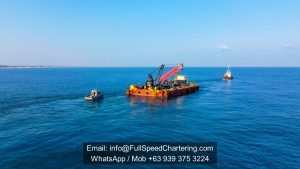
What are the Benefits of Using a Tug and Barge in Bulacan City’s New Manila International Airport?
Transporting heavy construction materials for the Bulacan Airport project demands not only efficiency but also environmentally-friendly strategies. What if I tell you that a method ticks all these crucial boxes? Welcome aboard to explore the unique benefits of utilizing tug and barge in Bulacan City for the construction of the new Manila International Airport!
Pitting against traditional modes like road transportation, a tugboat and deck barge cut through waterways, reduce traffic congestion, and minimize carbon emissions at large. Imagine skipping tons of kilometers stuck in roadblocks while carrying hundreds of tons of cargo without polluting Mother Earth! It’s fascinating, isn’t it? Well, hold on tight as we sail into an in-depth voyage into this strategic model’s functionalities and its potential to revolutionize infrastructural development practices going forth.
Here are six benefits of using a tug and barge in Bulacan City for the construction of New Manila International Airport:
Benefit 1 of Using a Tug and Barge in Bulacan: Cost-Effective Solution for Heavy Materials (New Manila International Airport)
Investing in a tug and barge in Bulacan can bring substantial cost savings when it comes to transporting the hefty materials required for the mammoth project at New Manila International Airport. The primary reason is simple: economy of scale. Tugs and barges can haul immense amounts of freight, from thousands to tens of thousands of tons per trip, dwarfing what trucks or trains can carry. This capability results in fewer trips and less fuel consumption overall, hence driving down costs remarkably.
Moreover, with minimal infrastructure requirements compared to road or rail transport—where bridges, roads, or tracks need constant maintenance—waterborne transportation stands as a much cheaper alternative over the long run. Therefore, using tug and barge in Bulacan not only offers initial cost-effectiveness but also ensures sustainable savings throughout the project’s duration, clearly demonstrating its value for large-scale endeavors like the construction of New Manila International Airport.
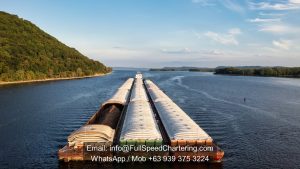
Benefit 2 of Using a Tug and Barge in Bulacan: Efficient Transportation Means Over Waterways (New Manila International Airport)
The second major advantage to using a tug and barge in the Bulacan Airport project is that it allows for incredibly efficient transportation over waterways. Building an airport of such magnitude necessitates transporting enormous quantities of construction materials, and doing so by land can be both logistically complex and time-consuming. Waterways, however, are an underutilized pathway that can enable swift transit of these heavy loads.
Using tugboats and barges allows the New Manila International Airport team to navigate with ease around potential road traffic congestion. Imagine a clear route devoid of other vehicles, where transportation timing can be methodically planned without unexpected delays. The aqua route also permits the movement of significantly more massive loads per trip compared to trucks on congested roads, yielding cost-effective benefits in addition to time efficiencies. This combination enhances overall operational productivity, an aspect vital to completing this ambitious construction feat more smoothly and effectively.
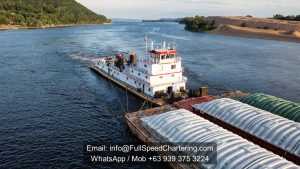
Benefit 3 of Using a Tug and Barge in Bulacan: Minimising Traffic Congestion on Roads (New Manila International Airport)
Benefit 3 of using a tug and barge in Bulacan Airport hearts at one of the most pressing issues troubling the Manila metropolis: traffic congestion. Picture this: instead of convoy upon convoy of trucks sluggishly transporting materials through arterial roads, imagine streams of those resources smoothly gliding on waterways onto construction sites at the new Manila International Airport.
This method significantly minimizes road congestion, allowing for better vehicle fluidity and reduced commute times for city inhabitants. The other alternative is a gridlocked urban labyrinth that torments everyone with countless hours lost in transit—we’re sure you’ll agree that’s no way to live. Thus, adopting a water-based transport system—unprecedented as it may sound—stands as an ingenious solution right beneath our noses. A logistical genius stroke, it elevates productivity not only at the construction site but also transcends to facilitate smoother movement within exasperating city routes.
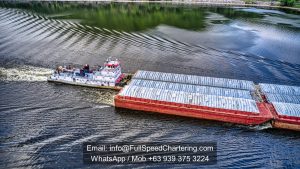
Benefit 4 of Using a Tug and Barge in Bulacan: Environmentally Friendly Construction Practice (New Manila International Airport)
Benefit 4 of using a tug and barge in Bulacan during construction is the inherent environmentally friendly nature of this method. In an era where sustainability is not just a catchphrase but an urgent necessity, integrating such practices in major projects like the New Manila International Airport in Bulacan highlights our collective responsibility towards Mother Earth.
The tug and barge in Bulacan significantly reduces the reliance on heavy-duty trucks, which contribute vastly to carbon emissions. Instead, it takes advantage of waterways for transportation that leave negligible carbon footprints. Besides, it also minimizes disruption to local terrestrial habitats, preserving biodiversity within the region. As we build for progress, let’s remember – it need not be at the cost of our environment!

Benefit 5 of Using a Tug and Barge in Bulacan: Ability to Transport Oversized or Irregular Loads (New Manila International Airport)
Benefit 5 stands out as the unique advantage that tug and barge in Bulacan Airport can bring to transporting construction materials when dealing with oversized or irregular loads. With ongoing massive construction projects such as the New Manila International Airport in Bulacan, this becomes inherently vital. This formidable duo handles these heavyweight champs, which could be anything from gigantic steel girders and slabs of concrete to entire prefabricated sections of airport structure—all with ease.
Why is this significant? Well, it circumvents issues associated with road transportation where regulations can limit cargo size due to safety reasons. Not forgetting the potential risk of damage during land transportation due to unforeseen circumstances like poor weather conditions and route-related complications. By opting for a tug and barge in Bulacan as a mode of transport, project managers are afforded peace of mind knowing they can maneuver their heavy lift cargoes without stalling progress on Bulacan’s prestigious aviation project!
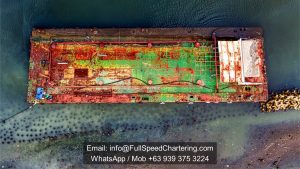
Benefit 6 of Using a Tug and Barge in Bulacan: Enhanced Safety Measures (New Manila International Airport)
Benefit 6 of leveraging a tug and barge in Bulacan for the construction of The New Manila International Airport is undoubtedly its amplified safety measures. The magnitude of this mega-infrastructure project mandates paramount attention to safety, and these marine vessels impeccably meet this requirement. Tugs ensure secure docking and undocking procedures by controlling barges’ movements, thus preventing accidents that can be caused by wind or tide forces.
Additionally, using tugboats and deck barges to ferry construction materials over waterways rather than crowded road networks significantly alleviates the risk of land-based transportation mishaps. This approach also aids in reducing environmental pollution associated with road transport, encapsulating not only an efficient but also a safer way to progress such monumental construction work. Safety and sustainability go hand-in-hand when using tug-and-barge systems, marking them as ideal solutions for large-scale projects like the New Manila International Airport.
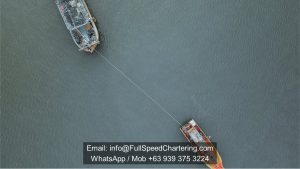
Advantages of Using a Tug and Barge in Bulacan City for the Construction of New Manila International Airport
One significant advantage of using a tug and barge in Bulacan for the construction of the New Manila International Airport is the reduction of road traffic congestion. This method circumvents the need to use highways and busy city streets to transport hefty equipment and materials, thereby contributing positively to local transportation efficiency. Instead, these resources can be moved directly from the source site onto barges via cranes (tugs), allowing for an efficient transfer process.
Moreover, by leveraging this approach, a substantial decrease in carbon emissions could be achieved, playing its part in preserving the environment amidst massive infrastructural development. Considering that tugs and barges create considerably fewer emissions compared with fleets of trucks or trailers typically used for such tasks, this method subscribes well to modern “green building” concepts. Undeniably, tug-and-barge logistics provides significant benefits to both construction timelines and environmental sustainability when constructing major projects like New Manila International Airport!
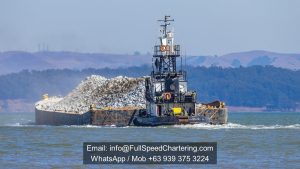
How Do You Transport Materials Using Tug and Barge in Bulacan for the Construction of New Manila International Airport?
Transporting construction materials by tug and barge in Bulacan Airport construction is not only cost-effective but a vital, nuanced logistic operation that ensures consistent progress. In Bulacan, these floating powerhouses ply along coastal waters, whisking huge quantities of resources directly to the site of the New Manila International Airport. Strategically maneuvered by competent marine officers, local tugboats pull barges filled with steel bars, aggregates, cement bags, and heavy equipment through a coastline mapped out specifically for this endeavor. The prefabricated elements for terminal buildings are also transported this way, as any delay could have a massive financial impact.
Despite occasional choppy waves or rain showers, transport using tugboats and hopper barges triumphed over traditional land transport in terms of both volume capability and time efficiency. This method cuts a substantial path around urban congestion, allowing steady construction in Bulacan without disrupting vehicular flow on highways or contributing significantly to air pollution from truck emissions. As such, it’s not just an option but the smartest choice for building the future gateway to Manila—conveying tons of cargo swiftly while safeguarding environmental harmony in what will soon become Asia’s premier trade and travel center.
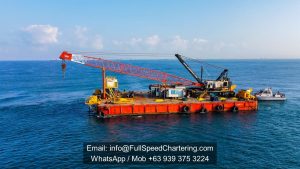
What is the New Manila International Airport in Bulacan? Introduction
The New Manila International Airport, also known as the Bulacan Airport, is a stunning development that is seizing its place in global aviation maps as an anticipated game-changer. Unlike any other airport in the Philippines’ archipelago, this colossal structure will berth on a massive piece of 2,500 hectares of land in Bulakan town, located north of Manila Bay.
Yet what makes this project uniquely fascinating isn’t just its size or advanced architectural design; it’s how they plan to utilize tug and barge in Bulacan Airport during the construction phase. This not only underscores innovation but showcases a commitment towards sustainable construction methodologies that help reduce carbon emissions and protect the environment. Breaking free from orthodoxies yet respecting nature’s boundaries, this airport encapsulates future-focused engineering at its finest.

Location and Accessibility: Getting to Bulacan
Navigating your way to Bulacan is no challenge at all, an aspect that makes it more appealing for construction endeavors such as the adventure involving a tug and a barge in Bulacan airport. The North Luzon Expressway (NLEX), the major artery towards the Northern Philippines, gracefully escorts you directly into the heart of Bulacan. It’s this ease of accessibility and strategic proximity to Metro Manila that enable comfortable transportation of heavy machinery utilized in significant projects.
Beyond just a simple geographical advantage, Bulacan also presents other substantial conveniences in terms of accessibility. Be it by land or water bodies that frame its geography—like Manila Bay to its southwest, which presents an ideal conduit for barge transportation—access becomes manifoldly efficient. So whether you’re transporting bulky cargo via trucks or significant mass via barges, working around the logistic landscape of Bulacan turns into quite a smooth affair.
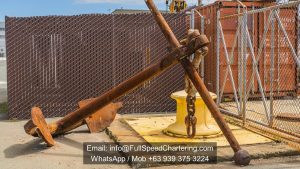
Design and Construction: Architectural Highlights
The tug and barge in Bulacan as a mode of transport can usher in unique architectural advantages during the construction of Bulacan Airport, combining functionality with aesthetics. The ease of transporting large, bulky building materials facilitates the creation of dramatic design structures that would be challenging to implement using traditional means. This approach allows architects to push their creative boundaries, incorporating distinctive elements such as sweeping curves, vast glass surfaces, or breathtaking high arches that promise to make Bulacan Airport an icon of structural artistry.
Aside from awe-inspiring aesthetics, this method also opens up possibilities for sustainable architecture. A tug and barge in Bulacan Airport construction enhances the feasibility of using heavyweight, eco-friendly materials, thus contributing towards reducing carbon footprint immensely. With Bulacan Airport poised to handle a massive volume of travelers annually, integrating environmental sustainability into its very design could set a powerful precedent in green building practices globally. Henceforth, authenticating that jaw-dropping designs needn’t mean giving nature the short end of the stick.
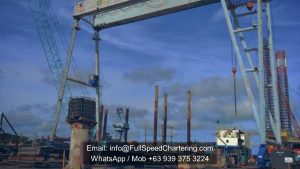
Project Financing and Economic Impact
In the realm of project financing, the use of tug and barge in Bulacan during the construction of NMIA plays a substantial role. While it may appear as an overlooked element in budgetary considerations, employing these water-based transportation machines serves as a cost-efficient method to transport massive volumes of construction materials. This operational strategy impacts reducing overhead expenses, thereby increasing financial resources allocated for essential aspects needed for airport development.
On a larger scale, this approach positively impacts Bulacan’s economy. The tug and barge in Bulacan contributes to local business growth by providing job opportunities for operators, maintenance Filipino crews, and administrative roles within their companies. Furthermore, these innovative logistical solutions stimulate other sectors, such as hospitality and Philippine tourism, post-construction. With improved infrastructure buttressed by strategic project financing options like tug and barge in Bulacan, the impact on the economic landscape will likely flourish even more in the coming years.
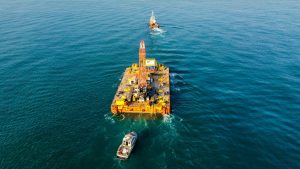
Expected Amenities and Facilities of NMIA
The New Manila International Airport (NMIA) in Bulacan promises to bring state-of-the-art amenities and facilities that will make the construction process, essentially for tug and barge in Bulacan Airport, seamless. The NMIA would be equipped with proper docking facilities specifically designed for tugs and barges. These facilities will allow efficient loading and unloading of huge cargoes, equipment, and construction materials directly from the sea route. This approach substantially reduces transport time and cost, thereby facilitating increased productivity.
Imagine, if you will, a greenfield seaside airport site buzzing with highly coordinated activities—shuffle service being utilized to maximize productivity for employee mobility around the vast site—while modern silos are brimming, waiting to be emptied efficiently by an army of sophisticated machinery. Moreover, a 24/7 surveillance system ensures the utmost security, while proper waste disposal areas promise to minimize environmental impact. The use of digital technology is also expected to result in smoother operations, potentially utilizing AI-operated drones for surface mapping or real-time monitoring applications. So, not only does NMIA’s anticipated infrastructure offer practical solutions, but it also hints at environmental stewardship as a core concern.

Environmental Considerations and Sustainability Efforts
In Bulacan, environmental considerations and sustainability efforts are not just buzzwords—they’re put into the heart of operations, especially in maritime activities like tug and barge in Bulacan Airport construction. Transiting goods or construction materials for the Bulacan Airport project using a tugboat and deck barge doesn’t only mean cost-effectiveness; it significantly calls attention to how we can reduce carbon footprints.
By shifting a portion of transportation demand from land to waterways around Bulacan, there is a substantial decrease in carbon emissions, unlike trucking over long distances. This environmentally conscious alternative harnesses natural water channels while respecting ecological balance. Truly transforming the ‘blue economy,’ this approach intertwines progress with sustainability principles. The Bulacan tug-and-barge system serves as a beacon, reminding us that development should not compromise our commitment to nature but instead leverage strategies harmonizing with it.
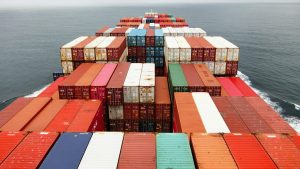
Comparisons with Other International Airports
When compared with other international airports, the utilization of a tug and barge in Bulacan for construction at NMIA becomes particularly noteworthy. Take London’s Heathrow and Dubai International Airport as examples; both have been consistently lauded for their efficient infrastructural design and cutting-edge equipment. Yet, in situations where there’s a need to transport bulky cargo across active runways without disrupting operations, they are often compelled by circumstance to resort to more traditional land- or air-based transportation.
What sets Bulacan apart is its strategic usage of waterways, using tugs and barges during construction to move large quantities of material efficiently and seamlessly. It’s a testament to innovative thinking that transforms existing geographical challenges into opportunities, hence redefining conventional norms in airport construction logistics. This fascinating approach could very well become a blueprint for future airport construction worldwide.
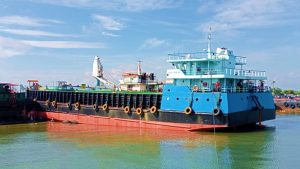
Benefits of Hiring a Tug and Barge in Bulacan for Construction Companies
A significant advantage a construction company stands to enjoy when hiring a tug and barge in Bulacan is the sheer volume of materials that can be transported. Traditional options often limit material transport, but a large barge can accommodate bulkier items like steel beams, concrete mixers, and even pre-assembled modules. Not only does this offer cost-efficiency by reducing numerous trips to one journey, but it also minimizes traffic congestion around the construction site, making operations smoother.
Furthermore, utilizing tugs and barges brings an environmental edge to your projects. Compared to hauling equipment on roadways, which results in significant carbon emissions, water transport significantly cuts down on pollution. Implementing ‘green’ practices in business isn’t just about conserving the environment; it boosts your company’s reputation too, as sustainable and responsible operations increasingly become benchmarks for success in modern industries.
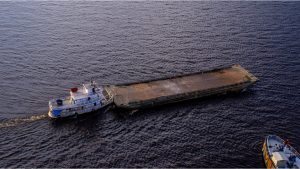
Summary: Revolutionizing Airport Construction with Tugs and Barges in Bulacan Airport
As we wrap up, there’s no denying that utilizing a tug and barge in Bulacan for the construction of the New Manila International Airport has fundamentally reformulated traditional norms. They’re not solely providing a cost-effective means of transport but also ensuring environmentally conscious practices. A direct contribution to lowering carbon footprints and less congestion on roads are just snippets of this change.
The beauty of success lies in its replication; harnessing an innovative, efficient, and sustainable approach yields exponential benefits without sacrificing resources. Revolutionizing airport construction protocols with tugs and barges undeniably marks a leap toward future infrastructural projects worldwide. The adventure has only just begun—let’s take the cruise together as we take this robust step towards greener construction methodologies!

